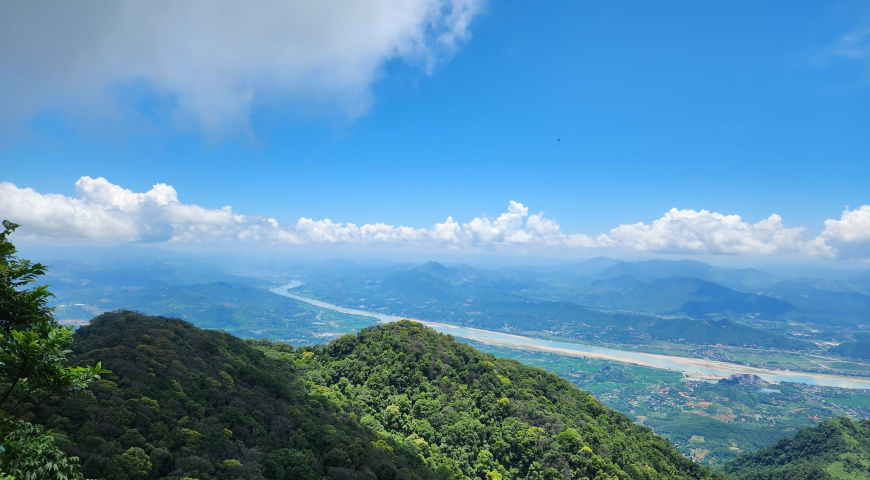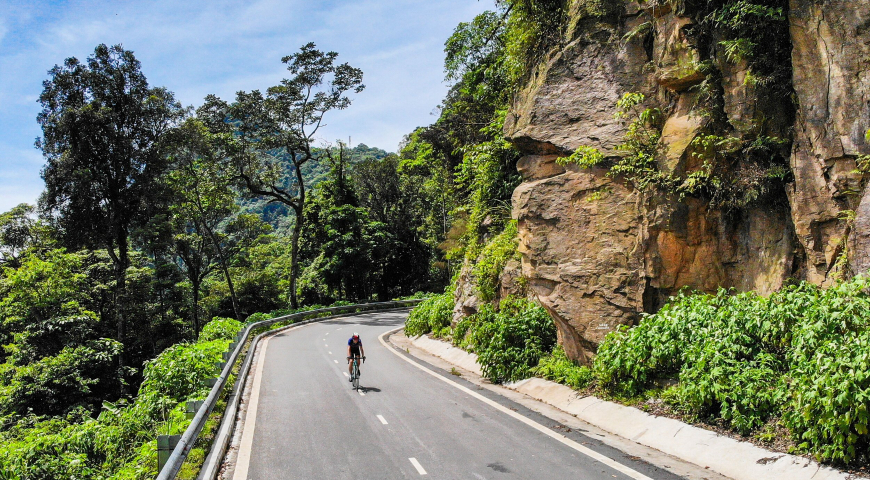Ba Vì, nằm cách Hà Nội khoảng 60 km về phía tây, là một vùng đất giàu vẻ đẹp thiên nhiên, huyền thoại và ý nghĩa lịch sử. Dưới đây là tổng quan về những điều làm cho Ba Vì trở thành một điểm đến hấp dẫn:
Huyền thoại và Ý nghĩa văn hóa
Ba Vì giữ một vị trí đặc biệt trong thần thoại Việt Nam. Nơi đây được coi là lãnh địa của Tản Viên Sơn Thánh (Sơn Tinh), Thần Núi, hay một trong Tứ Bất Tử của Việt Nam. Theo truyền thuyết, Sơn Tinh cư ngụ trên đỉnh Tản Viên và là người cầu hôn Công chúa Ngọc Hoa, con gái của vua Hùng. Câu chuyện của họ tượng trưng cho cuộc chiến vĩnh cửu giữa núi và biển, khi Sơn Tinh tranh với Thủy Tinh, Thần Nước. Các ngôi đền thờ, chẳng hạn như Đền Thượng, nằm trong Vườn Quốc Gia, là những địa điểm quan trọng về văn hóa tâm linh.
Di tích lịch sử
Trong thời kỳ thực dân Pháp, Ba Vì quy hoạch thành trại nghỉ mát do khí hậu mát mẻ. Người Pháp đã xây dựng các biệt thự, một nhà thờ và các công trình ở nhiều độ cao khác nhau, giờ là những tàn tích bị bao phủ bởi rừng. Các địa điểm đáng chú ý bao gồm nhà thờ đá và rừng thông, mang đến cái nhìn thoáng qua về quá khứ thuộc địa của khu vực này.
Thiên Nhiên
Ba Vì nổi tiếng với địa hình núi non, với dãy núi có ba đỉnh nổi bật: Đỉnh Vua Hùng (1.296 mét), Đỉnh Tản Viên (1.227 mét), và Đỉnh Ngọc Hoa (1.131 mét). Vườn Quốc Gia được thành lập vào năm 1991 để bảo vệ các hệ sinh thái đa dạng của nó. Công viên trải rộng với diện tích hơn 10.800 hecta và là nơi cư trú của hệ thực vật và động vật đa dạng phong phú, bao gồm nhiều loài đặc hữu. Du khách có thể khám phá những khu rừng xanh thẳm, thác nước và nhiều loại vườn cây, biến nơi đây thành thiên đường cho những người yêu thiên nhiên.
Ba Vì hòa quyện một cách hoàn hảo vẻ đẹp tự nhiên với những câu chuyện văn hóa và chiều sâu lịch sử, tạo nên một điểm đến độc đáo cho những ai quan tâm đến di sản và cảnh quan thiên nhiên của Việt Nam.
Đa Dạng Sinh Học
Vườn có hệ sinh thái:
- 2,181 loài cây, gồm 503 loài thảo dược.
- 812 loài thực vật mạch, với một số loài lần đầu tiên xuất hiện ở Ba Vì, chẳng hạn như Ixora balansae.
- 65 loài động vật có vú, bao gồm khỉ đuôi dài, cầy hương, nhím và khỉ đuôi cụt đang bị đe dọa.
- 194 loài chim, chẳng hạn như chim Cochoa xanh, chim Én mỏ đỏ, và gà lôi Việt Nam.
- 61 loài bò sát, với những phát hiện gần đây như Gekko palmatus và Boiga guangxiensis.
- 27 loài lưỡng cư, bao gồm cả loài ếch lùn Vietnamophryne cuongi mới được xác định, đặc hữu của Ba Vì.
Đáng chú ý, các môi trường sống đa dạng của vườn hỗ trợ các loài lan cảnh quý hiếm đang bị đe dọa, bao gồm Bulbophyllum coweniorum và Esmeralda bella. Ngoài ra, vườn là một thiên đường cho côn trùng, với các quần thể bướm rực rỡ và các động vật không xương sống khác.
Vườn Quốc Gia Ba Vì minh chứng cho sự đa dạng tự nhiên của Việt Nam, mang đến cho du khách cơ hội trải nghiệm những cảnh quan và động vật hoang dã độc đáo. Dù bạn là một người yêu thiên nhiên, một nhà nghiên cứu, hay một du khách bình thường, vườn là một trong những khu vực sinh thái quý giá nhất của đất nước.



